#BrickMaking
Explore tagged Tumblr posts
Text
youtube
The Ancient Art of Brickmaking
from Townsends
75 notes
·
View notes
Text
The Incredible Brick Factory Producing 100,000 Bricks Daily 😲😆
#desiviralrecap#ViralVideo#MustSee#Satisfying#DailyLife#BehindTheScenes#HowItsMade#FactoryLife#IndustrialProcess#Manufacturing#MachineSatisfaction#BrickFactors#BrickMaking#ConstructionMaterials#BuildingBricks#BrickProduction#ConstructionLife#MadeInPakistan (or your local country)#CementAndBricks#MegaMachines#HeavyMachinery
1 note
·
View note
Text
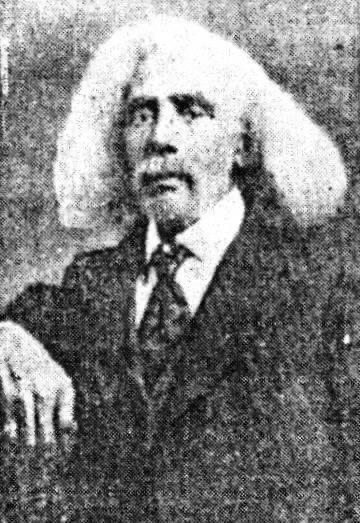
Joseph "Big Joe" Winters (1816 – 1916) was an African-American abolitionist and inventor who patented a wagon-mounted fire escape folding ladder mounted directly on fire wagons in 1878. He was born in Virginia to an African-American brickmaker and a Shawnee Indian mother. He later relocated to Chambersburg, Pennsylvania in 1830. During the time Winters lived in Chambersburg, he was active in the Underground Railroad.
#african#afrakan#kemetic dreams#africans#afrakans#brownskin#brown skin#joseph big joe winters#african american#shawnee#indian#asian#underground railroad#virginia#brickmaker#chambersburg#abolitionist#pennsylvania
144 notes
·
View notes
Text
God it’s soooooooooo awesome when a book is sooooooo good it just grabs you and pulls you forward. I’m in such a reading spell lately I loveeeeeee it yayyyyyyy summer yayyyyyyy laying around outside smashing delicious book after book
9 notes
·
View notes
Text

probably a different wb yeats was a brickmaker in mimico ontario than like. The Guy. i would have to assume
#certain flavours of lowbrow local history books are so funny#cause theyll just say random facts and move on because they only have like names and occupations they dont have lore#like i cant stress enough this guy hasnt talked about local brickmaking in like 50 pages this came out of nowhere#and by god he wont elaborate on wb yeats
0 notes
Text
i don't know a thing about thermodynamics but i swear in winter when the weather's been really cold for a while and then the temperature rises, it suddenly gets SO cold in my apartment. a rise of ten degrees outside makes it four to five degrees colder inside and i have to turn UP my heaters. it's like outside heat leeches off the inside heat. i sound insane but i swear it's true
#i'm guessing it might have something to do with this building's weird construction#(old wooden building that was outwardly converted to a brick house by an overenthusiastic brickmaker in the seventies)#it stores heat way too well inside during summer and then weirdness happens in winter
1 note
·
View note
Note
It's interesting how much stuff you need in order to form a civilization other than just food agriculture and metalworking. You need tanneries to turn hides into leather that can be used for clothes, bags, waterskins, shoes, etc. You need hemp or cotton or flax for textiles and cordage, and you need a large amount of people working on turning plant fiber into those. You need carpenters and masons and stonecutters and brickmakers to build your cities and roads, you need an absurd amount of pottery for the sake of storing food and water and wine, you need butchers and shepherds to obtain hides, tallow, knucklebones, materials for bowstring (hair, sinews) and meat, you need miners to obtain metals and precious stones and normal stones and certain chemicals, you need dyers to make your clothes look good, you may need coopers to make barrels if you're tired of pottery, fishers, breweries for beer and mead, beekeepers for honey and wax, shipwrights and longshoremen and sailors and sailmakers for any aquatic activity, charcoal burners for most of your fuel, porters and merchants to move things around, jurists and bureaucrats and architects and engineers to organise everything, etc. etc.etc.
it's impressive that throughout most of human history all of these trades combined were still a minority of the population compared to agricultural workers
I think this is always a great thing to keep in mind when learning history or writing fiction in historical/fantasy settings. Mostly everything we take for granted now is the result of industrial mass manufacturing processes. Just a century ago if that, most things were artisanally done. The amount of professions, some that are rather obscure today and now are practically lost (for example, ALL the very specific jobs in carpentry like wheelers and fletchers), is staggering. It's very worth to remember and record how they work, as they sometimes are the last ones that know their craft...
EUGENIO MONESMA FANDOM RISE UP
However I would slightly disagree with the fact that agricultural workers knew no trade. I would think that the average peasant (for a very loose definition) anywhere in the world was probably more skilled than the average person today. For one, they did have to build their houses, which means skills in whatever material was available. For another thing, most fiber processing and clothes making was done in personal houses or the local village, most overwhelmingly by women. Hunting, and thus butchering, was often a supplement to the rural diet, as well as brewing, alcohol making, thatching and pottery... of course, many of these were specialized jobs and few peasants would be blacksmiths for example, but I think I can say with some confidence that the average person in an agricultural economy had more skills than we think. Of course, this was because they had to do backbreaking labor by themselves to survive.
It is still worth remembering the basic fact, however, that over 80% or 90% of the world population during historical times was indeed composed of agricultural laborers of one sort or another. The times we live today are really unique if we think about this.
205 notes
·
View notes
Text
Ancient bricks from Mesopotamia have helped confirm a mysterious anomaly in Earth's magnetic field that occurred 3,000 years ago, a new study finds. Brickmakers baked the bricks, which were imprinted with the names of Mesopotamian kings, between the third and first millennia B.C. Iron oxide grains within the clay recorded changes in Earth's magnetic field when the bricks were heated, enabling scientists to reconstruct changes in the magnetic field over time, the team reported in a study published in the journal PNAS on Monday (Dec. 18). The finding may also help scientists date artifacts in the future, the team said.
Continue Reading.
199 notes
·
View notes
Text

Eleonara, the Mud Witch of Elgin
Lore under the cut vvv
*This universe uses a mixture of book, show and game canon!*
A graduate of Aretuza, Eleonara focused on her abilities as a healer, an herbalist and a skilled Geomancer. And after a failed stint in politics, the sorceress cut herself off from trivial court life and focused her attention on wandering the Continent, offering her services to small villages. Anything from healing, protection, and, perhaps most infamously: Stealing away women, children and the unfortunate in the night, guiding those in need to sanctuary.
Born to a Brickmaker and a local healer, Eleonara hailed from the tiny village of Elgin. Her home consisted of others also working with mud and clay, potters and sculptors, brickmakers and builders, and was hidden in the swamps of Temeria surrounding Lake Vizima.
El was a middle child with two older siblings and two younger, it was a poor family but a loving one. And the girl often spent time barefoot in the mud, tossing rocks further across the lake than her siblings and often excelling in Hide and Seek. In fact, it was actually quite easy for the child to make herself disappear. Whenever her siblings became cross with her, she’d vanish into the mist. Foot races led to opponents getting their feet stuck in mud turned hard like cement, and even bumps and scrapes on a little brother’s knee could be healed with a loving kiss at the cost of a nosebleed or a need for a long nap. Little did she know, this was the result of hidden powers coming to blossom from within.
Unfortunately, tragedy struck when bandits raided the village due to a rumor that gold had been found while mining the clay. Eleonara’s father was crippled from a devastating injury and, tragically, Eleonara’s mother and siblings were lost in the ensuing struggle. From a family of seven to a family of two, the wounds and eventual scarring ran deep. Eleonara’s father was never the same and carried around an everlasting sadness that his one remaining daughter could not heal. Not with all of the love and herbs in the world. The rift between them grew as time passed, only for their connection to be completely severed with the arrival of a teacher from Aretuza.
While Eleonara doesn’t blame her father for doing so, the man was far too uneducated to realize what was happening, the sorceress from Aretuza had been pointed in their direction after a complaint was filed regarding Eleonara’s magical stunts. The man, convinced that he was doing the right thing and that his daughter would be in safer hands, allowed her to be sold and taken to Aretuza. This would be the last time they would see each other.
Given that Eleonara was from a poorer family, she, like many of the other girls from poorer families, had to work twice as hard from within their prison at Aretuza. Providing sometimes dangerous and often grueling manual labor to support the school and its functions. All while not being allowed to leave nor while having any contact with the outside world.
The girl was *not* fond of Aretuza, growing to despise their teaching tactics and means of pitting girls one against the other as a means of achieving power and greatness. But regardless, she applied herself to her studies. She faced some ridicule for showing an interest in Geomancy, a stubborn branch of an especially stubborn and draining element. This ended up being something she ended up studying extensively and excelling in alongside healing and herbal tinctures. She graduated with average marks and was released into the court of an up and on the rise Baron. A Baron who, with his party of fellow men, had gathered and unified large swathes of villages and land together. It seemed a promising start, and with the right hand it could blossom into something more.
It would be Eleonara’s first, and last, dive into politics.
Eleonara was met with hostility, suspicion and dislike from the people. The Baron and his supporters treated her like a lap decoration more than a guide or advisor, and much of El’s advice and attempts to help were met with stubborn and narrow minded means of thinking. It soon became clear to her that these men were simply interested in power and conquest. Disheartened, Eleonara befriended the Baron’s wife, a village chieftain’s daughter taken and forced into a marriage she hadn’t asked for. They bonded over their shared hatred of the self appointed Baron and his men. And when fighting broke out between the men, Eleonara took it upon herself to take the Baron’s wife and her children and guide them back to her home village, there they could escape the country with an old lover.
Eleonara, feeling a sense of duty to Aretuza, remained. Even as the Baron was slaughtered and the power vacuum began, the sorceress staid with each leader until angry and abused subjects burned down the fortress. El simply let her image die with them, and left the ashes behind along with a vow to never work for higher powers again. In helping her friend escape, Eleonara had found her calling: She’d always been good at hiding things. Now she could help others do the same thing.
So she walks the continent, spending long periods of time out in the wilderness and among the earth. She hones her Geomancy and Geokinesis and seeks out the few masters of the element of Earth. However, she often peddles herbs and healing services to small villages and towns. And, occasionally, finding an orphaned child, a battered girl or an outcast, befriending them, and coming for them in the night to take them to a different place to begin anew. Daughters ripped from their families returned, children brought to sanctuary or loving arms of new parents, men left for dead sent to places of healing. It is how Eleonara heals her heart and makes her difference in the world she knows.
However, this has not been without incident. Those who recognize her mud stained clothes call her ‘The Mud Witch’. Handfuls of scorned husbands or hired thugs or witch hunters have been sent after her often. Most of which usually end up encased in thick and hardened clay. Many are under the impression that she whisks people away to be killed and used as sacrifices. And eerie clay figures often find their way into the homes of those who are ‘chosen’. Circles of clay figures can often be found in the woods, acting as a barrier to hide huts filled with supplies and provide temporary shelter for those who wish to journey to their new destination alone. Eleonara herself is a mysterious figure, one who doesn’t speak of herself often but remains level headed and calm in almost all situations. She defends her charges ferociously from monsters and men alike, and is not beneath trying to stand up to a Witcher or two in order to accomplish her tasks.
It is unknown how long she intends to keep doing this for. Perhaps it’s how she feels she can make the most use of her abilities. Or perhaps she’s simply looking for somewhere to belong herself. Regardless, befriending the Mud Witch of Elgin brings with it a deep bond and unwavering loyalty. One that is sure to last lifetimes.
#art#my art#mango does art#mango does ocs#the Witcher#Witcher#tw3#witch3r#witcher oc#Witcher ocs#oc lore drop AYY#eleonara
35 notes
·
View notes
Text
Is actor Michael Sheen the right person to rescue Welsh theatre?
Can one star save Welsh theatre? On a spring morning in Cardiff’s Wales Millennium Centre (WMC), 180 people are thronging for the answers. We’re in the Awen bar next to the gorgeous 1,900-capacity Donald Gordon theatre, which last summer staged the hit play Nye, about NHS founder Aneurin Bevan. This experience inspired its lead actor, Michael Sheen, to set up the new Welsh National Theatre (WNT), as he tells us today, scruffy-bearded and check-shirted, bouncing around a much smaller, makeshift stage. “Listen,” he says, responding to an apology for this stage’s minuteness, “I’ve acted in Aberavon shopping centre, so I’m used to being on anything.”
Sheen’s latest venture arrives after a hell of a few months, as we Welsh people say, for English-language theatre in Wales.In December, the Cardiff-based National Theatre Wales (NTW – a separate organisation, founded in 2009) closed down, stripped of all Arts Council funding. In January came a cross-party Welsh Senedd report, A Decade of Cuts, revealing Wales ranked second to bottom for cultural spending in Europe (at £69 per person, above only Greece; by comparison, the UK received £91, neighbouring Ireland £149 and poll-toppers Iceland £691).
Creu Cymru, a body representing performing-arts organisationsacross Wales, published an even gloomier sector snapshot, underlining “the consistent devaluing of arts and culture through cuts to public funding, and the absence of obvious advocacy at a public and political level.” The Arts Council of Wales has since announced an extra £4.4m for arts and culture in the country, but redundancies and threats of closure to venues remain rife. Which raises the question: is Sheen’s advocacy enough?
In 2016, I moved back to my native Wales, where Sheen is embraced like a national hero. Today, his energetic persona – part everyman poet, part political orator next door – is undeniably infectious. He announces the theatre’s programme: a Wales-set, touring co-production of Thornton Wilder’s Our Town, which inspired Dylan Thomas’s Under Milk Wood; and Owain & Henry, a WMC-staged epic about Owain Glyndŵr’s battles with Henry IV. But do his plans help or hinder other theatre-makers in a bold, diverse, modern Wales? And can the WNT quieten murmurings of concern among some figures in the industry?
To begin at the beginning: English language theatre in Wales doesn’t just happen in Cardiff, a city only two hours from London (although though it also hosts the award-winning Sherman theatre, acclaimed pub venue The Other Room, and dynamic companies such as Hijinx, Taking Flight and Theatr Iolo). In the south Wales valleys are the RCT Theatres, and going west, there’s Milford Haven’s producing theatre, the Torch, Neath’s innovative company Theatr na nÓg and busy hubs such as the Aberystwyth Arts Centre, whose summer season attracts 6,000 people every year.
Heading north, there’s Bangor’s Pontio, and one of Wales’s premiere producing theatres Theatr Clwyd in Mold, which reopens this summer after three years, following a £50m capital development project part-funded by the Welsh government. Recent successes include Laura Wade’s Olivier award-winning play Home, I’m Darling (starring Katherine Parkinson) and 2019’s rapturously received community production The Mold Riots.
For full disclosure, I’ve been working with Theatr Clwyd this year, interviewing staff, volunteers, locals, actors and directors about its profound legacy within the small town. One retired brickmaker, Philip Jones, brought me all his 1980s programmes and told me how he fell in love with new storytelling. “The theatre stopped me being a bigot, it stopped me being a racist – it changed my life.”
A musical, a community-created play and a debut by Welsh writer Chris Ashworth-Bennion all feature in Theatr Clwyd’s opening season under new artistic director Kate Wasserberg. Sheen spoke to her in March. “He was very curious, wanting to help,” she says, “and refreshingly honest about his using his fame for good, going, ‘Would it be helpful if I was in that play?’” He is also excited by artists that he discovers, she adds. “But, of course, it’s early days, so getting to know each other is really important.”
Projects running in partnership already thrive across the country, according to an Arts Council of Wales report published last week. These include Craidd (meaning “core” or “heart”), a project bringing theatre to deaf, disabled and neurodivergent people, and Open Book, offering theatre freelancers fully paid shadowing work. NTW’s community-focused project Team also continues as a stand-alone entity – and despite being criticised for staging too few productions, and using non-Welsh writers and directors to make plays about Wales, NTW did have some notable successes, including 2011’s three-day epic The Passion, starring Sheen.
On the day of the WNT launch, Sheen announces they are receiving £200,000 from the Arts Council of Wales, transition funding from the closure of NTW. Later, I speak to the council chair, Maggie Russell. “The Welsh National Theatre is a bold new initiative and an exciting addition to Wales,” she says. “Michael has stated he’s looking for a wide variety of funding sources, and we’re really excited about him working in partnership.”
On with the show. Sheen introduces his new company in turn, including Nye writer Tim Price and TV producer Russell T Davies, who directed Sheen in a production of David Copperfield at the West Glamorgan Youth Theatre in 1987. (“That was a real turning point for me,” Sheen says, “when I started to take it seriously.”)
Four new plays have also been commissioned from emerging writers from diverse backgrounds. They include Francesca Goodridge, a working-class director from Swansea, who studied acting at Liverpool Institute for Performing Arts after working in a call centre for six years. Frustrated by the lack of good parts for young women, she created the musical Shout!. Azuka Oforka, an alumna of the Sherman theatre’s Unheard Voices programme, is also a recent signing. Her hit play The Women of Llanrumney, a drama set on a Welsh-run Jamaican sugar plantation, is currently receiving rave reviews at the Theatre Royal Stratford East.
Down the corridor in a separate studio, I chat to Owain & Henry playwright Gary Owen about the historic lack of opportunities to present Welsh stories on a large scale. (Owen talks about the volume of Welsh monodramas, such as the recently revived Iphigenia in Splott, “Because monologues are cheap!”) People wonder why there’s never been “a Braveheart for Wales”, he says. “We need to fill that gap.”
Then I get my five minutes with Sheen – under spotlights, after he’s done the rounds for TV. I ask him if he’s been concerned that the WNT might be seen as a vanity project. He begins, carefully: “It’s a balance at first to use whatever resources we have now. One of the resources I have is a celebrity profile, to bring all these people here today to listen and set up co-productions.” He smiles his megawatt smile. “Although the co-production model is also useful because we haven’t got any money!”
He talks passionately about his youth theatre days. After that came Rada, West End theatre, films including The Queen and Frost/Nixon, and TV roles in Masters of Sex, Good Omens and Quiz – not bad work for a boy from Port Talbot. He took that free training for granted, he says: “My pathway has disappeared, but I want people to have even more opportunities.” He also talks about the importance of connecting Wales geographically (“touring is a big priority … we must remember mid Wales and west Wales”) and confirms that his theatre won’t be bilingual. He says that his first chat was with Steffan Donnelly, artistic director of the Welsh-language national theatre, Theatr Cymru (Theatr Cymru, the Welsh language national theatre, already exists.), adding: “There’s already fantastic work going on in Wales on a small and mid-scale. We want to be able to support and work in collaboration with that.”
A day after the launch, I’m contacted by a seasoned theatre professional who wishes to remain anonymous. Creu Cymru, the performing arts body whose gloomy snapshot of the industry I mentioned earlier, began its annual conference in the WMC corridors an hour after the WNT launch ended, they say. What did the WNT contribute, I ask? “Nobody from it turned up,” they reply.
This professional doesn’t doubt the “right intentions” behind Sheen’s project, and “the brilliant theatre-makers” within it, but also worries there’s “a lack of awareness” of the mentoring and development going on “every single day” across Wales. “And a new entity has just landed, with a Hollywood star fronting it, bestowing a national name upon themselves – and they’re asking for money. That’s a real worry.”
They also make another intriguing point: “If the theatre had called itself the Michael Sheen theatre, no one would mind.” It’s early days, but Sheen’s status as a national lodestar will be monitored closely, not least by the many creatives who make Welsh theatre thrive.


12 notes
·
View notes
Text
The Ruin of All Witches by Malcolm Gaskill

I love this book; I am always thinking about it. It's on a beginner to intermediate level. It does a really good job of showing how slowly tensions rose until it burst in accusations of witchcraft; contrary to contemporary belief, it wasn't something that happened over night. Malcolm Gaskill also does a fantastic job of showing how intertwined accusations of witchcraft were with mental health and class.
Summary:
"In Springfield, Massachusetts in 1651, peculiar things begin to happen. Precious food spoils, livestock ails, property vanishes, and people suffer convulsions as if possessed by demons. A woman is seen wading through the swamp like a lost soul. Disturbing dreams and visions proliferate. Children sicken and die. As tensions rise, rumours spread of witches and heretics and the community becomes tangled in a web of distrust, resentment and denunciation. The finger of suspicion soon falls on a young couple with two small children: the prickly brickmaker, Hugh Parsons, and his troubled wife, Mary. Drawing on rich, previously unexplored source material, Malcolm Gaskill vividly evokes a strange past, one where lives were steeped in the divine and the diabolic, in omens, curses and enchantments. The Ruin of All Witches captures an entire society caught in agonized transition between superstition and enlightenment, tradition and innovation."
Where to read it:
Your local library!
Amazon - $17
Audible
AbeBooks - $11
SecondSale - $10
#library#the ruin of all witches#witch#witch community#pagan witch#witchblr#witchcraft#history#historical witchcraft
9 notes
·
View notes
Text

Yarrow Mamout (c. 1736 – January 19, 1823) was a formerly enslaved African entrepreneur and property owner in Georgetown, DC. An educated Fulani Muslim, he gained his freedom in 1796 after 44 years as an enslaved person. His portrait is being held in the Philadelphia Museum of Art.
He was born in West Africa. He was kidnapped, enslaved, and taken to Annapolis, Maryland, from Guinea in 1752 on the slave ship Elijah. A member of the Fulani people, he spoke the Fula language and could read and write Arabic and rudimentary English.
He was sold to Samuel Beall, who owned a plantation in Takoma Park. He became Beall’s manservant and served his son, Brooke. By 1790, he moved with Beall to Georgetown and began hiring himself out for wages. He became a jack of all trades, working as a brickmaker, charcoal burner, basket weaver, cart driver, and stevedore, working long hours to earn enough money to buy his freedom.
He gained freedom at the age of 60 when Brooke Beall died, manumitted by enslavers who believed him too old to work anymore. He spent £20 to buy and free his seven-year-old son, Aquilla, who had been born into slavery on a neighboring farm. Little is known of the boy’s mother.
He amassed savings of $200 and became one of the first investors in the successful Columbia Bank of Georgetown. He purchased a lot located at 3324 Dent Place NW in Georgetown, valued in a tax assessment at $30. He constructed a log house on the land. He remained a devout, lifelong Muslim, praying regularly and avoiding the consumption of pork and liquor.
He loaned $170.85 to a white merchant named William Hayman to help purchase a warehouse. Hayman defaulted on the loan after his death, but Nancy Hillman, the daughter of his sister, sued to recoup the loss. She received $300 from the foreclosure and sale of the warehouse.
Aquilla purchased a farm in Washington County, Maryland, and moved there with his wife, Mary “Polly” Turner, a midwife and formerly enslaved person. The community of Yarrowsburg, Maryland, was named in her honor. #africanhistory365 #africanexcellence
5 notes
·
View notes
Text
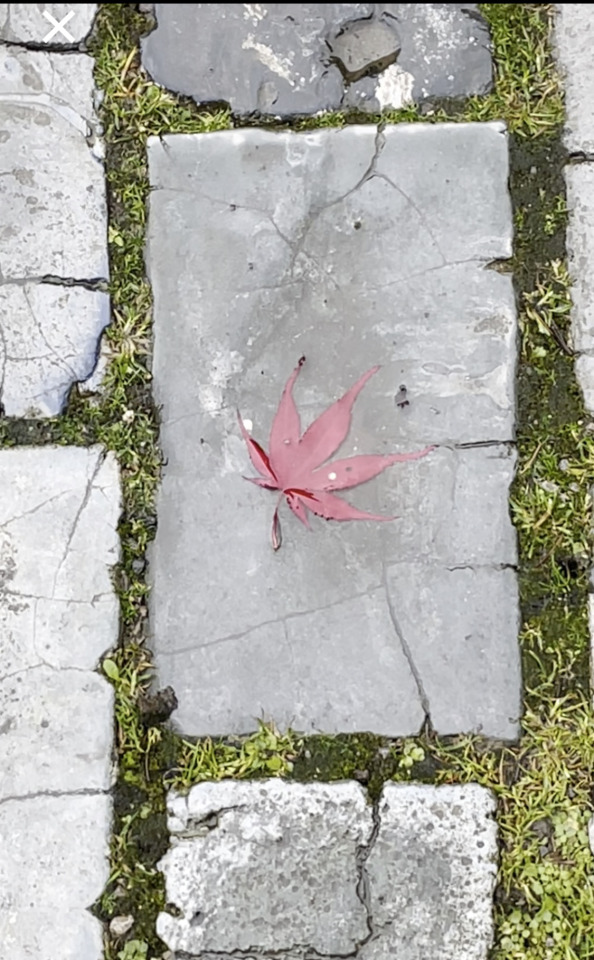
Isn’t this beautiful? I’m sure people who know about these things could have made the red brighter. But I thought it was lovely as it was in the rain. The cobbles btw are early Teesside recycling. The waste left over from the alchemy that turned Cleveland ironstone into steel left slag (yes, that’s where the insult came from) some enterprising folk (Scoria brickmakers) created tiles or cobbles out of the waste and sold them worldwide. And I walk on them everyday 200 years later. Made on Teesside: Made of Steel.
7 notes
·
View notes
Text
While it is possible to create bricks from many kinds of natural mud and clay the brickmaking industry currently relies on carefully measured cocktails of specific chemicals in fiercely guarded recipes. On several occasions whistleblowers who had attempted to share the brickmaking secrets have disappeared under strange circumstances.
12 notes
·
View notes
Text
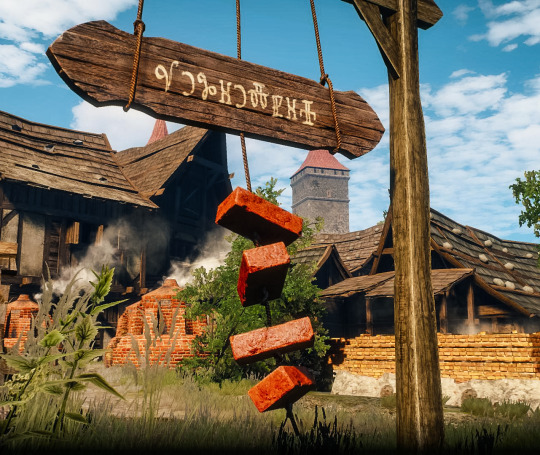
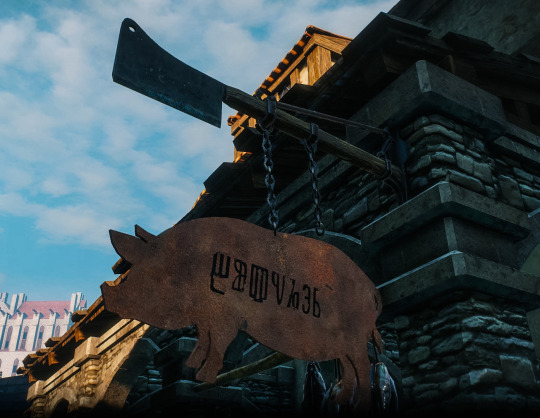
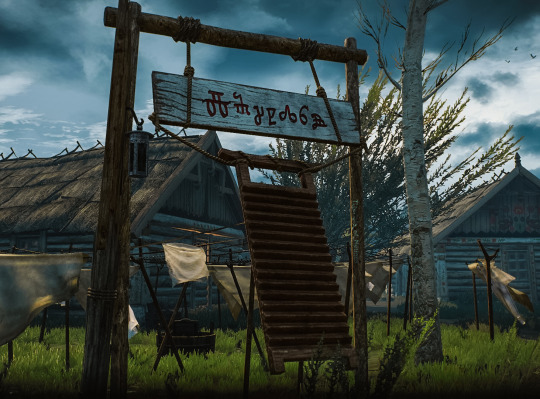
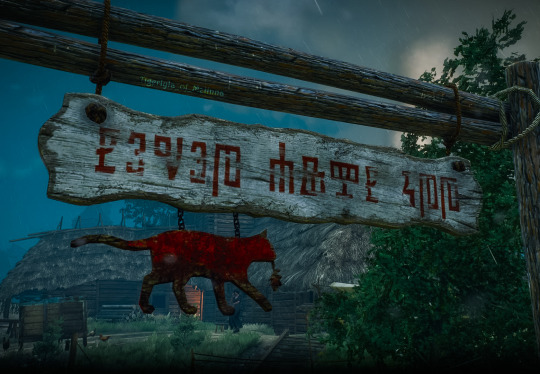
Shop Signs: Novigrad (Outside the City)
Brickmaker, Butcher and Laundry.
Bonus: The Seven Cats Inn
Screenshots from my PS4 gameplay with photoshop enhancements.
(BTW I tried looking for them in Skellige but the shops have no signages. In small villages (and even in larger settlements like Kaer Trolde and Muire) everyone knows who the merchants are.)
#the witcher 3#witcher 3#witcher 3 wild hunt#novigrad#northern realms#the witcher#virtual photography#photoshop#ps4 screenshots#TLylaedits/arts
27 notes
·
View notes

